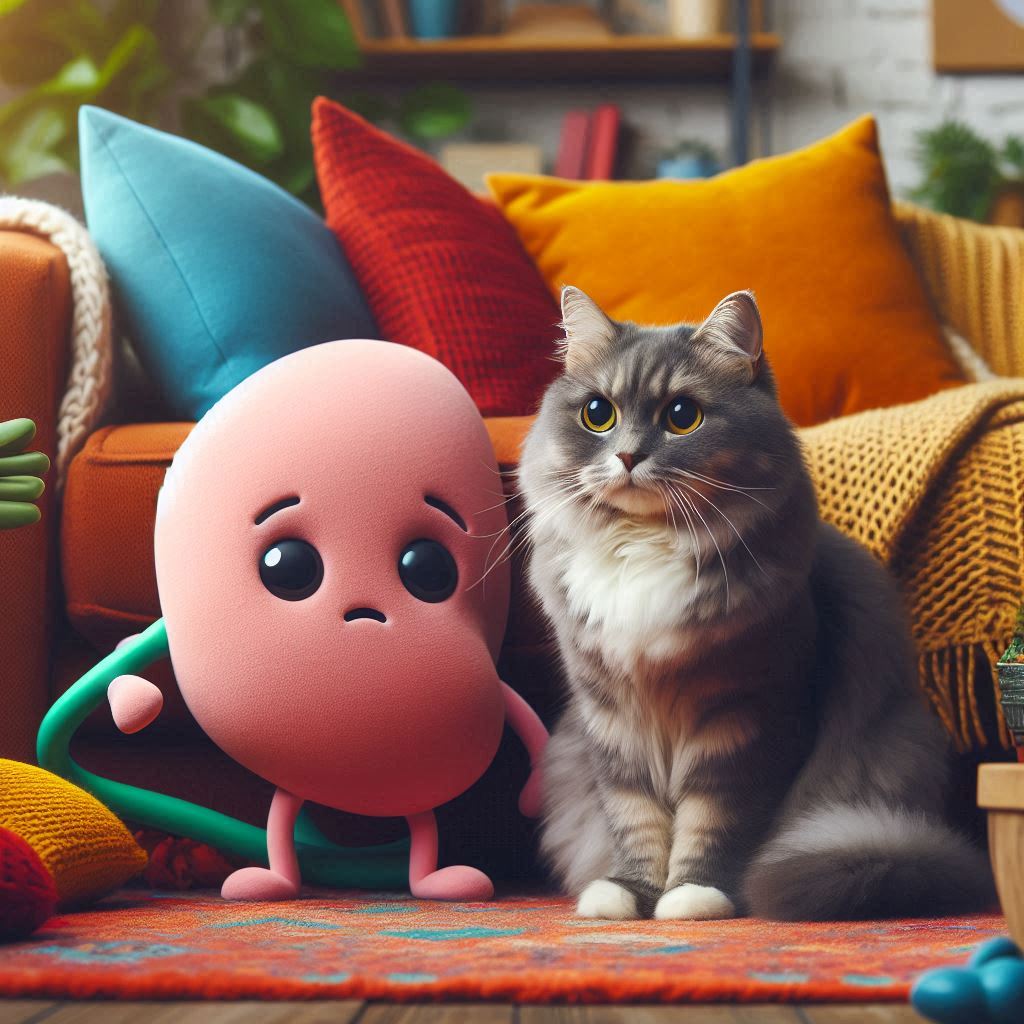
貓咪腎臟保健指南
Share
一、了解貓咪的腎臟功能
腎臟是貓咪身體中的重要器官,主要負責以下功能:
-
過濾血液:腎臟過濾血液中的廢物和毒素,並通過尿液排出。
-
調節體液平衡:腎臟控制體內的水分和電解質平衡,確保身體機能正常運作。
-
調節血壓:腎臟參與調節血壓,維持血壓在正常範圍內。
-
生成荷爾蒙:腎臟生成某些荷爾蒙,如促紅細胞生成素,有助於紅細胞的生成。
二、常見的腎臟疾病
貓咪常見的腎臟疾病包括:
-
慢性腎病:貓咪腎臟功能逐漸衰退,通常無法完全治癒,但可以通過早期診斷和治療延緩病情進展。
-
急性腎衰竭:腎臟功能突然失常,可能由感染、毒素或創傷引起,需要立即就醫。
三、保養貓咪腎臟的建議
為了保養貓咪的腎臟,飼主可以採取以下措施:
1. 充足的飲水
-
促進飲水:確保貓咪隨時有乾淨的新鮮水可供飲用,可以使用自動飲水器來吸引貓咪飲水。
-
濕糧補充水分:考慮餵養濕糧,因為濕糧的水分含量高,有助於增加貓咪的總水攝入量。
2. 優質的飲食
-
選擇低蛋白、低磷食物:選擇專門為腎臟病貓咪設計的處方飼料,這些飼料通常含有低蛋白質和低磷,有助於減少腎臟負擔。
-
避免高鹽分食物:高鹽分食物會增加腎臟負擔,應避免給貓咪食用含鹽量高的食物。
3. 定期健康檢查
-
血液和尿液檢查:定期帶貓咪去獸醫那裡進行血液和尿液檢查,以監測腎臟功能,早期發現問題。
-
血壓測量:定期測量貓咪的血壓,確保在正常範圍內。
4. 適當的藥物和保健品
-
降磷藥物:某些貓咪需要服用降磷藥物來控制血磷水平,減少腎臟負擔。
-
保健品:一些保健品如Omega-3魚油、活性炭和必需氨基酸有助於腎臟健康,可以根據獸醫建議適量添加。
5. 減少壓力
-
創造舒適環境:確保貓咪有一個安靜、舒適的生活環境,減少壓力源。
-
定期運動和活動:定期與貓咪互動,提供適當的運動和活動,有助於保持身心健康。
四、總結
保養貓咪的腎臟需要綜合考慮飲食、飲水、健康檢查和生活環境等多方面因素。通過採取預防措施和早期診斷治療,可以延緩腎臟疾病的進展,確保貓咪過上健康、快樂的生活。
Guide to Kidney Health Care for Cats
I. Understanding Your Cat's Kidney Functions
The kidneys are important organs in your cat's body and are responsible for the following functions:
Filtering the blood: The kidneys filter waste products and toxins from the blood and excrete them through the urine.
Regulating fluid balance: The kidneys control the balance of water and electrolytes in the body to ensure normal functioning.
Regulation of blood pressure: The kidneys are involved in the regulation of blood pressure to maintain it within the normal range.
Hormone production: The kidneys produce certain hormones, such as erythropoietin, which helps in the production of red blood cells.
Common Kidney Diseases
Common kidney diseases in cats include:
Chronic Kidney Disease: The gradual decline of a cat's kidneys, which usually cannot be completely cured but can be slowed down by early diagnosis and treatment.
Acute Kidney Failure: Sudden loss of kidney function, which may be caused by infection, toxins or trauma and requires immediate medical attention.
Suggestions for maintaining your cat's kidneys
In order to maintain your cat's kidneys, owners can take the following measures:
1. Adequate water intake
Promote water intake: Ensure that your cat has fresh, clean water available at all times. You can use an automatic water dispenser to attract your cat to drink.
Hydrate with wet food: Consider feeding wet food, which has a high water content, to help increase your cat's total water intake.
2. Quality Diet
Choose low-protein, low-phosphorus foods: Choose prescription diets specifically designed for cats with kidney disease. These diets are usually low in protein and phosphorus, which can help reduce the burden on the kidneys.
Avoid foods with high salt content: foods with high salt content will increase the burden on the kidneys, so avoid foods with high salt content.
3. Regular Health Checks
Blood and urine tests: Take your cat to your veterinarian for regular blood and urine tests to monitor kidney function and detect problems at an early stage.
Blood pressure measurement: Measure your cat's blood pressure regularly to ensure it is within normal limits.
4. Appropriate medications and supplements
Phosphorus-reducing medication: Some cats need to take phosphorus-reducing medication to control blood phosphorus levels and reduce the burden on the kidneys.
Nutraceuticals: Nutraceuticals such as Omega-3 fish oil, activated charcoal and essential amino acids can help with kidney health and can be added according to veterinary advice.
5. Reduce stress
Create a comfortable environment: Ensure that your cat has a quiet, comfortable living environment to reduce sources of stress.
Regular exercise and activities: Regular interaction with your cat and providing appropriate exercise and activities will help maintain physical and mental health.
Conclusion
Maintaining your cat's kidneys requires a combination of factors such as diet, water intake, health checks and living environment. Through preventive measures and early diagnosis and treatment, the progression of kidney disease can be slowed down to ensure a healthy and happy life for your cat.